Over the past number of years, we have been focusing on growing the cow herd at Drumforber. Since starting in the programme, the herd has grown from just over 40 cows in 2016 to 90 to calve between this past autumn and the coming spring, split two-thirds spring calving and one-third autumn calving.
With another batch of heifers coming in as embryo recipients and further retentions, this time next year will see the farm supporting 40 autumn-calving cows and 75 spring-calving. It has been a hard slog to get this far as so many heifers have been retained over the past few years, meaning a low level of sales from the enterprise. However, we have run through the calculations and, while it was hard work initially, the long-term cashflow benefit of growing so quickly far outweighs the short-term reduction in sales.
The biggest problem with the expansion is that winter accommodation is now under pressure. Back in the summer, we looked at renting sheds locally for youngstock but didn’t feel it was an ideal situation between logistics and maintaining the herd health status. Instead, construction has started on a new shed at home. It is a 100ft x 50ft shed, closed on three sides. The open side will face on to our existing cattle buildings. It is hoped that the shed will be finished by late January, to allow everything to be set up ahead of calving.
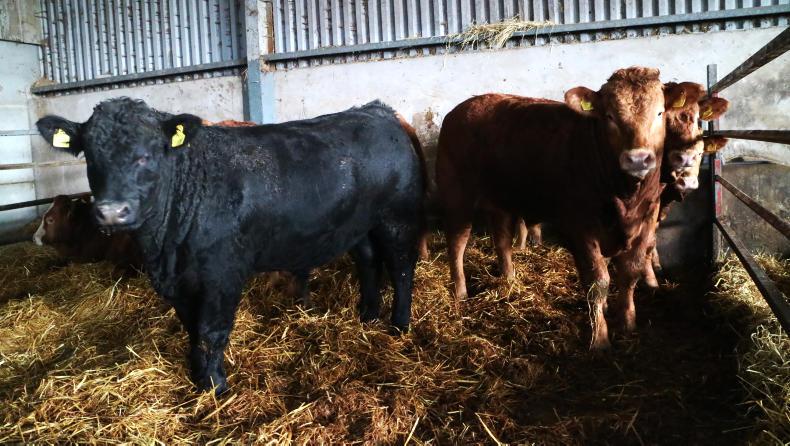
A pen of finishing bulls.
With shed space being short, it was decided to sell the weaned bulls, off their mothers. They average £733 at six months old, with the top coming in at £900. When looking at the feed, bedding and fixed costs that would be needed to take them through to fat, it has worked well for us.
Like last year, their mothers were kept outside for as long as possible. Unfortunately, unlike last year, ground conditions deteriorated more quickly, so they were housed at the end of November. They are now on a dry cow diet of straw and red clover silage. Initially the cows were on 1kg of straw but their dung was a little loose. We are in the process of slowly increasing the straw and monitoring the dung to tighten the cows up.
Prior to housing, the cows were scanned and of the 60 through the race, only three were empty, giving an empty rate of 5%. Two of the empties were older cows and one was a later calver that didn’t return to the bull in time.
In the back end of last year, grazing lambs were brought on to the farm to tidy up surplus grass and to run across a reseed to help it establish
The heifer calves are on a diet of 1kg of straw, 1kg of protein molasses and 20kg of first-cut silage. They will be grown on through the winter and we will take a draw of the best off as replacements.
Autumn calving has finished and the bulls are now in with the cows. There are also six recipients to join the autumn group. They are on a diet of 33kg of grass silage, 1kg of straw and 1kg of protein molasses.
Spring barley
The spring barley has all left the farm and working from the dried weight sold, yield averaged 8.75t/ha (3.5t/acre). More than half of the oats are still on farm, so yield is yet to be finalised.
Next harvest, we intend to establish a forage crop as soon as possible after the combine has been through to extend our grazing season and increase organic matter in the soil.
In the back end of last year, grazing lambs were brought on to the farm to tidy up surplus grass and to run across a reseed to help it establish. This was a great success and some of the older swards looked the best they have in a long time this spring, thanks to the sheep grazing. With this in mind, we have brought in a batch again this year.
Having some lambs grazing also made us consider the enterprise mix on the farm, and has led to the establishment of a small flock of sheep.
We have decided to enter the world of pedigree Texels and have bought five pure ewes in partnership with a friend.
Alongside the pedigree ewes are 25 mules that have had pedigree embryos implanted in them. All are high-health ewes to ensure that the venture starts off on the right foot. Since implantation, all 30 are running with a Texel tup to sweep up any that have not held. The intention is for them to lamb in mid-February.
The expansion in stock numbers will also mean another 5.5ha of grass will be sown out this coming spring. While this past season saw enough silage harvested to nearly do two years, it cannot be guaranteed every year.
Adviser comment – Robert Gilchrist
With cattle having been housed for a few weeks and settled on to rations, now is the time to check and see if the ration is matching expectations. The simplest way to monitor cattle diets is to inspect the dung – it offers a fantastic guide to how a ration may be performing.
In the case of Drumforber, the dung was a little on the loose side. In order to solve this, the straw has been increased by 0.5kg/head/day. This diet will run for a week to see how the changes have taken effect. If the dung is still loose, it will be increased another 0.5kg for another week. At this point, if the dung is still loose, the ration will be looked at again.
Intakes also need to be checked to make sure that the dry matter matches that on the analysis. If animals are eating more or less than predicted by the ration, it may be worth getting another silage sample done to double-check the dry matter.
Over the past number of years, we have been focusing on growing the cow herd at Drumforber. Since starting in the programme, the herd has grown from just over 40 cows in 2016 to 90 to calve between this past autumn and the coming spring, split two-thirds spring calving and one-third autumn calving.
With another batch of heifers coming in as embryo recipients and further retentions, this time next year will see the farm supporting 40 autumn-calving cows and 75 spring-calving. It has been a hard slog to get this far as so many heifers have been retained over the past few years, meaning a low level of sales from the enterprise. However, we have run through the calculations and, while it was hard work initially, the long-term cashflow benefit of growing so quickly far outweighs the short-term reduction in sales.
The biggest problem with the expansion is that winter accommodation is now under pressure. Back in the summer, we looked at renting sheds locally for youngstock but didn’t feel it was an ideal situation between logistics and maintaining the herd health status. Instead, construction has started on a new shed at home. It is a 100ft x 50ft shed, closed on three sides. The open side will face on to our existing cattle buildings. It is hoped that the shed will be finished by late January, to allow everything to be set up ahead of calving.

A pen of finishing bulls.
With shed space being short, it was decided to sell the weaned bulls, off their mothers. They average £733 at six months old, with the top coming in at £900. When looking at the feed, bedding and fixed costs that would be needed to take them through to fat, it has worked well for us.
Like last year, their mothers were kept outside for as long as possible. Unfortunately, unlike last year, ground conditions deteriorated more quickly, so they were housed at the end of November. They are now on a dry cow diet of straw and red clover silage. Initially the cows were on 1kg of straw but their dung was a little loose. We are in the process of slowly increasing the straw and monitoring the dung to tighten the cows up.
Prior to housing, the cows were scanned and of the 60 through the race, only three were empty, giving an empty rate of 5%. Two of the empties were older cows and one was a later calver that didn’t return to the bull in time.
In the back end of last year, grazing lambs were brought on to the farm to tidy up surplus grass and to run across a reseed to help it establish
The heifer calves are on a diet of 1kg of straw, 1kg of protein molasses and 20kg of first-cut silage. They will be grown on through the winter and we will take a draw of the best off as replacements.
Autumn calving has finished and the bulls are now in with the cows. There are also six recipients to join the autumn group. They are on a diet of 33kg of grass silage, 1kg of straw and 1kg of protein molasses.
Spring barley
The spring barley has all left the farm and working from the dried weight sold, yield averaged 8.75t/ha (3.5t/acre). More than half of the oats are still on farm, so yield is yet to be finalised.
Next harvest, we intend to establish a forage crop as soon as possible after the combine has been through to extend our grazing season and increase organic matter in the soil.
In the back end of last year, grazing lambs were brought on to the farm to tidy up surplus grass and to run across a reseed to help it establish. This was a great success and some of the older swards looked the best they have in a long time this spring, thanks to the sheep grazing. With this in mind, we have brought in a batch again this year.
Having some lambs grazing also made us consider the enterprise mix on the farm, and has led to the establishment of a small flock of sheep.
We have decided to enter the world of pedigree Texels and have bought five pure ewes in partnership with a friend.
Alongside the pedigree ewes are 25 mules that have had pedigree embryos implanted in them. All are high-health ewes to ensure that the venture starts off on the right foot. Since implantation, all 30 are running with a Texel tup to sweep up any that have not held. The intention is for them to lamb in mid-February.
The expansion in stock numbers will also mean another 5.5ha of grass will be sown out this coming spring. While this past season saw enough silage harvested to nearly do two years, it cannot be guaranteed every year.
Adviser comment – Robert Gilchrist
With cattle having been housed for a few weeks and settled on to rations, now is the time to check and see if the ration is matching expectations. The simplest way to monitor cattle diets is to inspect the dung – it offers a fantastic guide to how a ration may be performing.
In the case of Drumforber, the dung was a little on the loose side. In order to solve this, the straw has been increased by 0.5kg/head/day. This diet will run for a week to see how the changes have taken effect. If the dung is still loose, it will be increased another 0.5kg for another week. At this point, if the dung is still loose, the ration will be looked at again.
Intakes also need to be checked to make sure that the dry matter matches that on the analysis. If animals are eating more or less than predicted by the ration, it may be worth getting another silage sample done to double-check the dry matter.






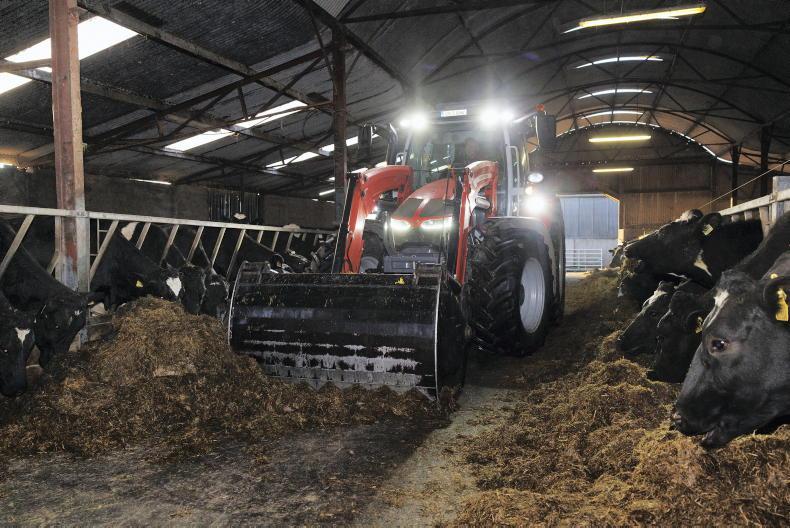
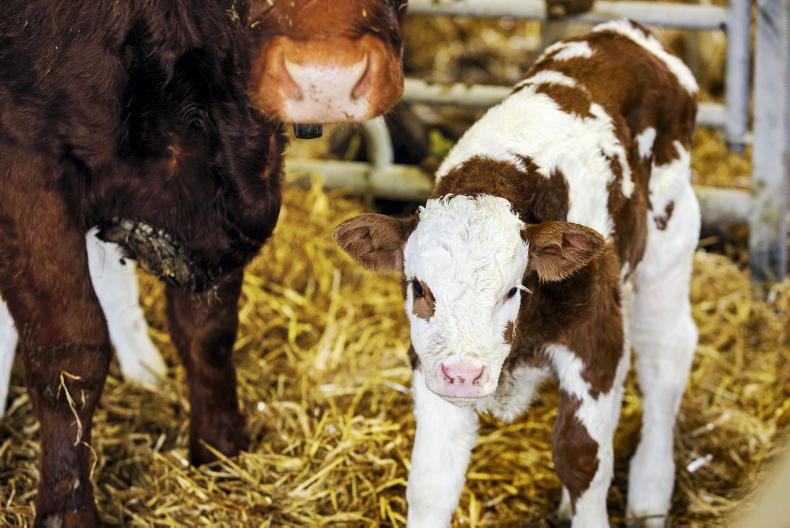
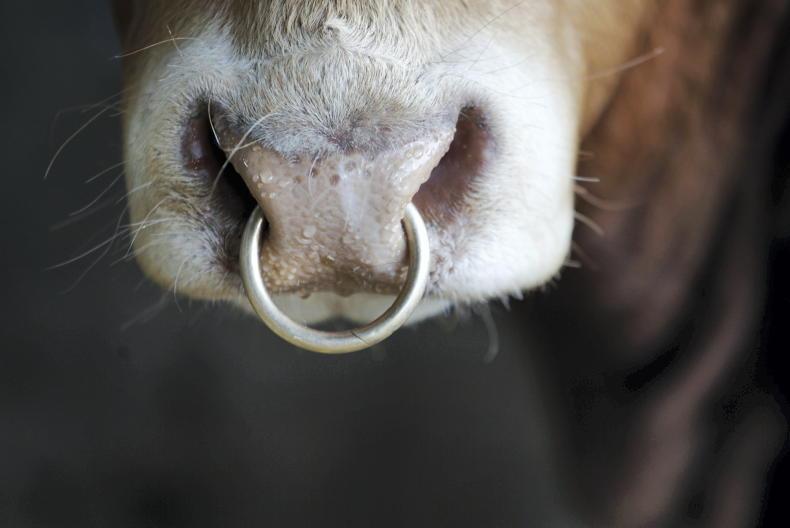
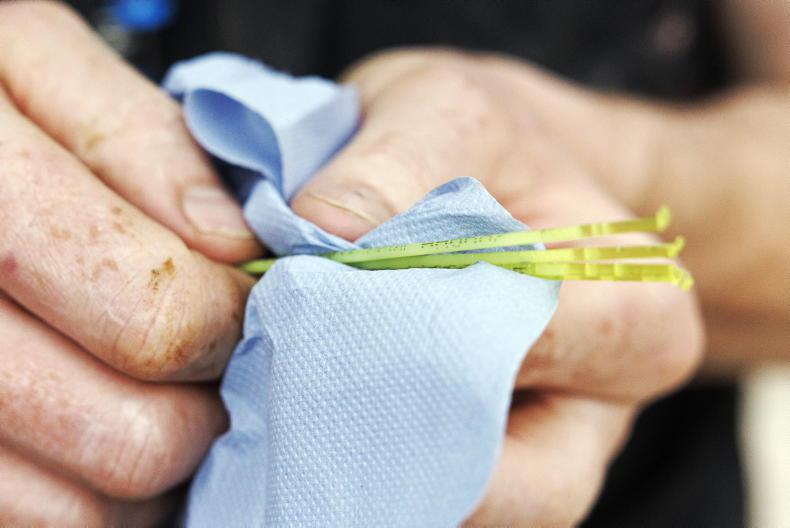
SHARING OPTIONS